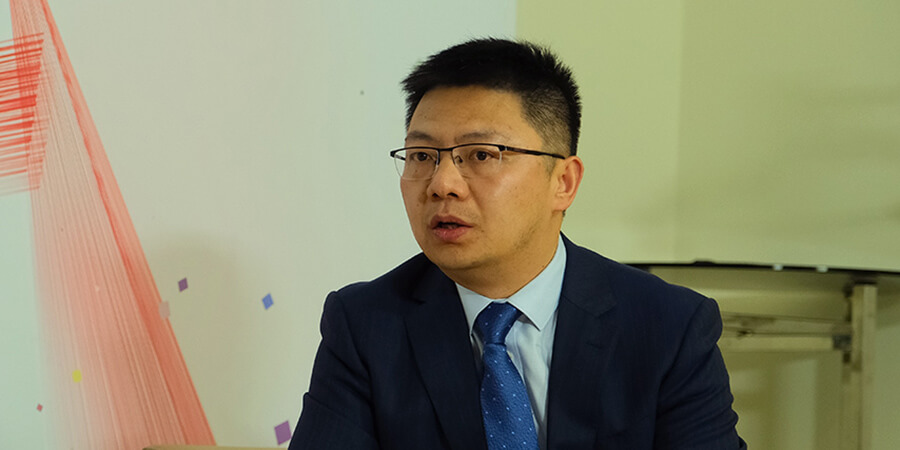At the MBBF conference, Huawei unveiled a groundbreaking innovation: the Ambient Site solution. This revolutionary approach not only sets the stage for enhanced network intelligence but also optimizes Total Cost of Ownership (TCO) and improves user experiences. Fred Wang, Vice President of Huawei's SingleRAN Product Line, described this innovation as a comprehensive vision for fully digitalized telecom sites, representing a significant advancement in the industry.
In an exclusive interview with Telecom Review, Wang shared his impressions of the MBBF conference. Having attended the event in Dubai before, he expressed his appreciation for its role as a vital platform for showcasing new solutions and products. "It provides an invaluable opportunity to introduce these innovations to our customers," he said, highlighting the importance of gathering feedback and gaining insights into future trends through direct interactions with attendees.
Envisioning the Ambient Site: A Holistic Approach
Wang went on to explain the concept of the Ambient Site. He clarified that the term encompasses much more than just the core technical equipment; it includes power supplies, antennas, and transmission systems. “We coined the term ‘Ambient Site’ to reflect this holistic perspective,” Wang noted, emphasizing that the solution addresses the entire site ecosystem rather than focusing solely on individual components. This integrated approach helps Huawei meet its customers' needs more effectively, providing a smarter and more cohesive network infrastructure.
To illustrate this concept, Wang likened a telecom site to a human body, where the system acts as the brain, coordinating various components that work together in harmony, much like arms, legs and other organs. This synergy is essential for achieving a fully digital and intelligent site. He emphasized the notion of macroevolution, predicting that in the future, not only telecom equipment but all associated equipment would evolve into fully digital and intelligent systems, transforming the entire ecosystem.
The 1+3+N Architecture and Intelligent Management
Wang introduced the innovative 1+3+N solution architecture, which underpins the Ambient Site. This framework includes a unified digital platform that integrates and manages all site components, three core systems—digital antennas, digital power supplies, and digital transmission—that form the foundation of operations, and a flexible range of applications and services tailored to the operator's needs. He explained how this architecture enhances site intelligence, boosts operational efficiency, and reduces TCO.
A crucial element of the Ambient Site is the unified intelligent network management, which plays a pivotal role in coordinating the base station with auxiliary systems. This integrated approach streamlines management by ensuring that power supplies work in sync with technical equipment, thereby minimizing potential disruptions. Wang pointed out that, in the past, power and site management required separate systems and teams, often leading to issues during power outages. With the new coordinated management system, critical services can be sustained longer without the need for expanded backup power capacity.
In the antenna domain, traditional systems were passive and unable to adjust to changing service demands. However, the new Ambient Site solution allows antennas to dynamically align with traffic patterns, directing high-capacity signals to areas with greater demand and avoiding congestion. Similarly, in transmission, the Ambient Site addresses challenges such as identifying fiber cuts, which previously required passive systems that could not pinpoint exact locations. With its advanced algorithms, the Ambient Site can quickly identify the location of issues, enabling faster service restoration.
Huawei's Vision for a Smarter Network Infrastructure
As Wang discussed the commercialization and scalability of the Ambient Site solution, he highlighted Huawei’s unique position to provide telecom and power supply equipment. The company is progressively deploying these solutions globally, starting with energy and power supply systems already implemented in China and several Latin American countries, including Brazil, Chile, Colombia, Peru and other countries. By integrating telecom equipment with power supply systems, Huawei helps operators minimize additional investments in power infrastructure, allowing them to utilize existing cabling for site expansions or upgrades.
Looking to the future, Wang expressed Huawei’s commitment to iterating and enhancing its Ambient Site solutions. He emphasized the importance of fostering joint innovations with customers worldwide, aimed at reducing investments, improving operational efficiency, and enhancing overall network management.
Through the launch of the Ambient Site solution, Huawei is not just introducing a technical advancement; it is pioneering a paradigm shift in how telecom sites operate, paving the way for a smarter, more efficient future in network infrastructure.
Huawei at MBBF: Global MBBF 2024: Accelerating 5.5G and AI Convergence to Lead the Mobile AI Era











